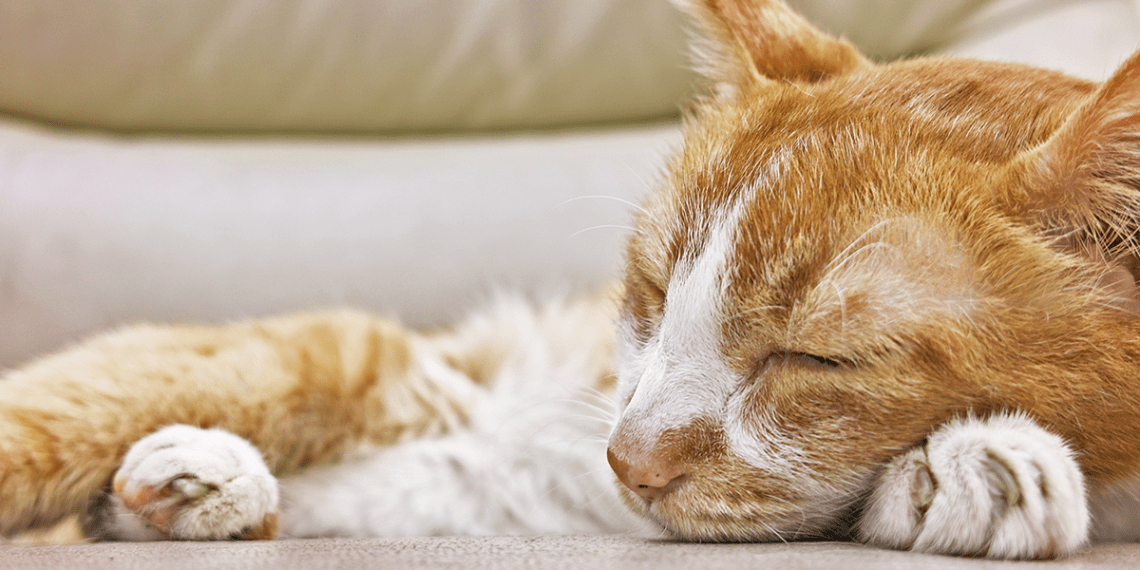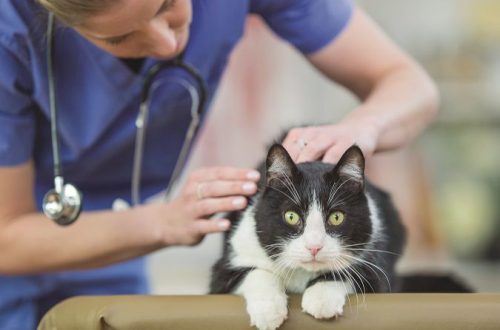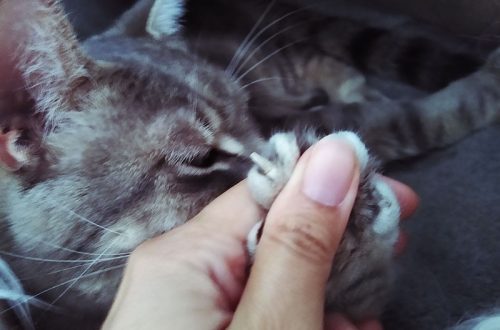
Nephritis in cats: symptoms and treatment
Contents
O kidneys
The kidneys perform many important functions in the body: they filter the blood, removing toxins from the urine, regulate the level of electrolytes, calcium, glucose, phosphorus, participate in hematopoiesis and in the regulation of pressure. Therefore, nephritis is a dangerous, often severe disease.
In the acute form of the disease, kidney damage occurs quickly and in the absence of any specific external symptoms.
The chronic form can be asymptomatic for a long time. As a rule, until kidney function decreases significantly, and complications develop: increased thirst and urination, decreased appetite and weight, anemia, hypertension (increased pressure).
Types of jade
According to the nature of the course of the disease, they are distinguished:
Acute nephritis – develops under the influence of various pathological factors: chemicals (ethylene glycol), plants (lilies), drugs that are potentially toxic to the kidneys (aminoglycosides, non-steroidal anti-inflammatory drugs, fosfomycin).
Also, acute kidney damage can occur against the background of other serious conditions: sepsis, blood loss, significant dehydration, trauma, etc.
Chronic nephritis – More common in older adults. The disease can develop against the background of prolonged hypertension, oncological processes (lymphoma), recurrent (recurring) diseases: pyelonephritis, urolithiasis (urolithiasis), cystitis (inflammation of the bladder).
The cause of such nephritis may be congenital diseases. For example, polycystic disease in Persian, exotic, British shorthair, Scottish fold (and straight) cats, amyloidosis in Abyssinian cats.
Regardless of the structure from which the kidney lesion began, all its functionality will be affected, because. all parts of the kidney are closely interconnected. But according to the localization of the pathological process (the area of the lesion), we can conditionally distinguish:
pyelonephritis – Caused by a bacterial infection. The pelvis and parenchyma of the organ are involved in the inflammatory process. Bacteria can enter the kidney through the ureters (thin tubes that connect the kidney to the bladder) from the lower urinary tract or through the bloodstream. Pyelonephritis can develop secondary to other diseases, such as chronic viral infections (viral leukemia or immunodeficiency), diabetes.
Interstitial nephritis (fibrosis) – with this type of disease in cats, the parenchyma is affected. There are many pathological factors that can lead to this: bacteria, viral diseases, chronic diseases (diabetes mellitus, hyperthyroidism, etc.). Gradually, the normal working tissue of the kidneys is replaced by fibrous tissue – a dense, non-functional connective tissue. The kidney decreases in size, shrinks.
Tubulointerstitial nephritis – chronic changes in the parenchyma of the kidneys and the tubular (vascular, filtering) system under the influence of various, sometimes unknown, factors. More common in older cats. It can develop against the background of previously transferred acute nephritis.
glomerulonephritis – inflammation of the glomeruli – filtering vascular glomeruli of the kidneys. In cats, the disease occurs rarely and is usually associated with chronic viral infections: feline leukemia virus, feline immunodeficiency, viral peritonitis.
tubular necrosis – leads to the death of filtering tubules – tubules in the structure of the kidney. Most often caused by poisoning with toxins: lilies, ethylene glycol.
Hydronephrosis – pathological distension of the renal pelvis due to a violation of the outflow of urine from the kidney. The cause is a blockage of the ureter with a calculus (stone), a clot of mucus. Also, the cause of blockage can be a neoplasm of the kidney and tissues around the ureter, trauma, surgical error during operations in the abdominal cavity.
Symptoms
As mentioned above, the main danger of nephritis in cats is the absence of any specific external symptoms or their gradual, imperceptible development at the initial stage of the disease.
In an acute course, it is noted: apathy, refusal to feed, vomiting, fever. In the case of severe kidney damage, there may be a decrease in urine production (oliguria) or its complete stop (anuria).
Unfortunately, in many cases with acute kidney injury, the cat enters the clinic already at the stage when the damage to the kidney tissue is irreversible, the survival rate of such patients is low.
In a chronic process, the following are most often noted: increased thirst and urination, weight loss, appetite, periodic vomiting, constipation, decreased activity. In most cases, in the chronic course of the disease, the owners pay attention to the symptoms only when they become apparent, which means that most of the kidney tissue is no longer functioning.
Diagnostics
To diagnose nephritis in a cat, a number of studies are required:
Biochemical blood test for urea, creatinine, phosphorus, electrolytes. Helps to understand the function of the kidneys.
A general clinical blood test is needed to detect inflammation and anemia (decrease in red blood counts) – a common complication of a chronic disease.
SDMA is an analysis that is an earlier way to assess kidney function than creatinine, because. its level rises in the blood earlier. It is used as a method of additional or primary diagnosis of nephritis in the early stages of a chronic course.
Ultrasound examination of the urinary system. It is necessary for a visual assessment of the structure of the kidneys and the detection of its changes.
Analysis of urine. Needed to assess kidney function. Urinalysis for protein/creatinine ratio reveals protein loss through the kidneys.
If a bacterial pathology, such as pyelonephritis, is suspected, a urine culture may be required.
Tonometry. Measurement of pressure is necessary to exclude hypertension, which can develop against the background of the chronic course of this disease, as well as other diseases. High pressure negatively affects the brain, eyes, heart, kidneys and leads to their damage.
Treatment of nephritis in cats
In acute kidney injury, an important step will be to collect an anamnesis (medical history) to understand the cause of the disease. In some cases, such as ethylene glycol poisoning, it is possible to administer an antidote (antidote). Animals with acute kidney injury are treated in a hospital, because. These are patients who require constant medical supervision.
In the case of acute nephritis in a cat, hemodialysis is used as an emergency measure – a procedure in which the blood is cleansed of toxins with special equipment, and the kidney at this time has the opportunity to recover.
Equipment for hemodialysis in cats is very specific and is available only in a few major veterinary centers in the country.
Also, the animal is given infusion therapy, antiemetic drugs are administered, and the electrolyte balance is corrected.
Pyelonephritis requires antibiotic therapy. The antibiotic is usually selected based on urine culture.
In the chronic course of the disease, treatment will depend on the stage of the process. The following therapeutic and preventive measures are carried out: correction of nutrition, the level of phosphorus in the blood with the help of special additives, fluid and electrolyte balance, and a decrease in protein loss through the kidneys. Anemia and hypertension are also corrected.
Prevention
Safe environment: do not leave household chemicals, potentially toxic drugs in the cat’s reach.
Avoid free range.
Do not use medications that are potentially toxic to cats: aminoglycosides, some non-steroidal anti-inflammatory drugs, fosfomycin, etc.
Do not allow the cat to come into contact with indoor plants and flowers in bouquets.
Timely detect and treat diseases of the lower urinary tract: cystitis, urolithiasis, urethritis.
In cats older than 10 years, conduct regular preventive examinations 1-2 times a year with an assessment of kidney function: ultrasound, blood test for urea, creatinine, general clinical urinalysis.
Jade in cats – the main thing
Nephritis is an inflammation of the kidneys in cats. It can be acute and chronic.
Conventionally, nephritis can be divided according to the area of kidney damage: glomerulonephritis, tubular necrosis, etc. the structures of the kidney are inseparably linked with each other, the pathological process can spread to the entire organ.
The causes of acute nephritis are often toxic in nature; are associated with the intake of nephrotoxic (poisonous to the kidneys) substances into the body. Other causes of acute kidney injury would be: obstruction of the urinary tract by stones, bacterial damage to the kidneys, bleeding, significant dehydration, etc.
Symptoms of acute nephritis most often include: apathy, refusal to eat, vomiting, fever. In severe cases, decreased or no urination.
The chronic type of the disease develops gradually. Frequent symptoms will be: weight loss, increased thirst and urination, decreased appetite, occasional vomiting, constipation.
Diagnosis of nephritis is complex and includes: ultrasound of the kidneys and bladder, urinalysis, general clinical and biochemical blood tests, pressure measurement.
Treatment of acute nephritis in cats is based on possible elimination of toxins and hemodialysis. Infusion therapy, removal of vomiting, correction of electrolytes and phosphorus are also carried out.
Treatment of the chronic type of the disease depends on the stage of the process and includes correction of diet, fluid balance, electrolytes, phosphorus, hypertension, anemia.
Sources:
Elliot D, Groer G. Nephrology and Urology in Dogs and Cats, 2014
Upperurinarytractinfections (pyelonephritis), ISCAID 2019 // The Veterinary Journal, (Pyelonephritis of dogs and cats – from the ISCAID Guidelines, translated by Vasiliev A.V.), 2019.
Chandler E. A., Gaskell R. M., Gaskell K. J. Diseases of cats, 2011
Edited by Gary D. Norsworthy. The feline patient, fifth edition, (Cat patient, fifth edition), 2018
Poisonous Plants. Poisonous plants // Source: www.aspca.org/pet-care/animal-poison-control/toxic-and-non-toxic-plants.





